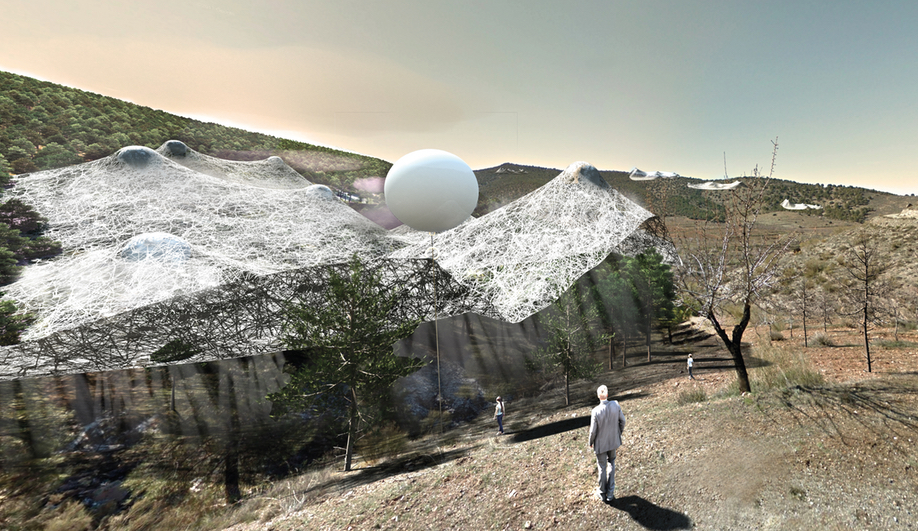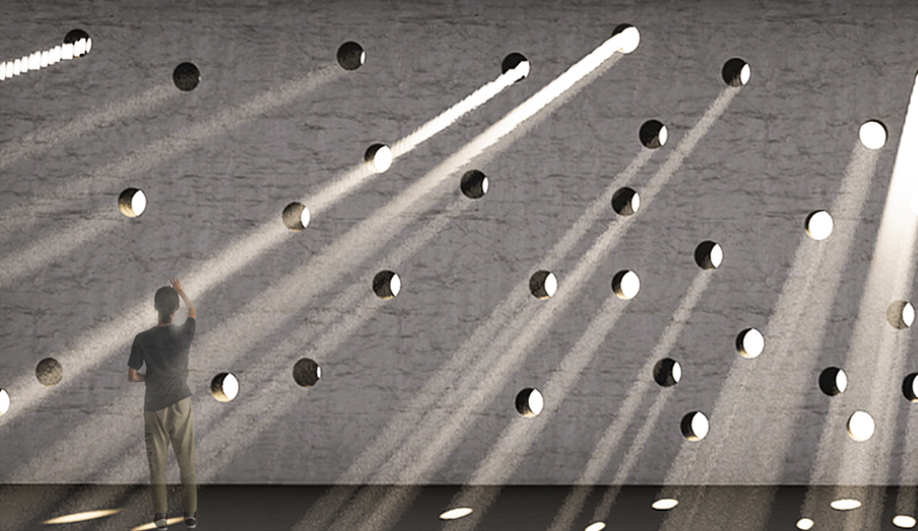Proposals to create well-lit pathways for pupils in rural China and to construct buildings in forms that make better use of daylight and shadow are the winners of this year’s International Velux Awards for Students of Architecture.
The IVAs – established more than a decade ago “to strengthen the role of daylight in building design” – have been given out biannually since 2004 by Velux Group, the Denmark-based manufacturer of roof windows and skylights.
This year’s victors – chosen by a jury of international architects among nine regional winners representing five continents in two categories – were announced at the 2018 World Architecture Festival’s gala closing dinner in Amsterdam on Friday. Students from 250 architecture schools in 57 countries had submitted proposals for using daylight in architecture, contributing a total of 633 ideas.

The winners in the Daylight Investigations category – Yuhan Luo, Di Lan, Yuan Liu and Yusong Liu – hail from Tianjin University in China. Called Road to Light, their proposal addresses “a very basic need for safe passage between communities” in mountainous rural areas of their country, where the lack of road infrastructure and electricity can make getting to school a dangerous task for children, especially when coming home in the dark.
The Tianjin team’s winning proposal suggests introducing a small amount of inexpensive fluorite to local pathways, where the bright colours of the stones will glow for several hours at night after being irradiated by sunlight during the day. Almost all provinces in China have large fluorite mines and the coarse processing of the raw stone into pavement material makes the proposal economically feasible for poor rural environments.
“It is a simple solution that changes the life of children in remote rural areas,” stated the jury, whose members included founding partner Li Hu of Beijing-based OPEN Architecture, American architect Rick Joy, Barcelona architect Carme Pigém Barceló, Croatian architect Saša Begović and VELUX Innovation Centre vice president Martin Pors Jepsen.

The winner in the second category – Daylight in Buildings – is Anastasia Maslova of Russia. A student at Kazan State University of Architecture and Engineering, she proposes tackling the problem of insufficient lighting in buildings by taking “a fresh look at architecture,” especially the common practice of designing rectilinear buildings.
“The project suggests a change in the shape of buildings and their openings, where rectangular shapes increasingly limit the penetration of light into space,” said the jury of Maslova’s plan, called Light Forms Jugglers. “It also analyses various alternative forms [such as prisms and inverted cones] that maximize the potential of natural light penetration as well as investigating the shadows cast by buildings.”

Among the runners-up in the Daylight in Buildings category is a site-specific proposal by students at the University of Virginia to provide the inhabitants of underground dugouts in Australia’s opal-mining heartland with water and daylight through distinctive “funnel skylights.” Another scheme – by a team from the University of Évora in Portugal – aims to convert the underused chimneys of traditional Alentejo residences into much-needed light wells.
In the Daylight Investigations category, runners-up include an ambitious proposal from Russia to direct solar rays from outer space to the clouds above subarctic cities during their long polar nights. Another – by students at the University of Toronto – proposes hydrating arid landscapes with nanorods that allow daylight to capture atmospheric moisture and turn it into usable water.

According to juror Pigém Barceló, founding partner of RCR Architects in Spain, this year’s projects marked a shift from the showy, speculative submissions of previous years to address pressing global issues such as environmental degradation, displaced people and new threats to quality of life. “Whereas some years ago people were more optimistic and showing new spectacular things,” she said of past awards submissions, “now it is more about inclusion of all people and bringing people to the same level with architecture.”
In addition to award certificates, all of the winners receive a cash prize – $7,500 for each of the global winners to share among team members and their teacher and $1,800 to each of the regional winners for dispersing among team members and teachers.
Now the largest competition for architecture students, the IVAs are organized in collaboration with the International Union of Architects, the 60-year-old body based in Paris.

